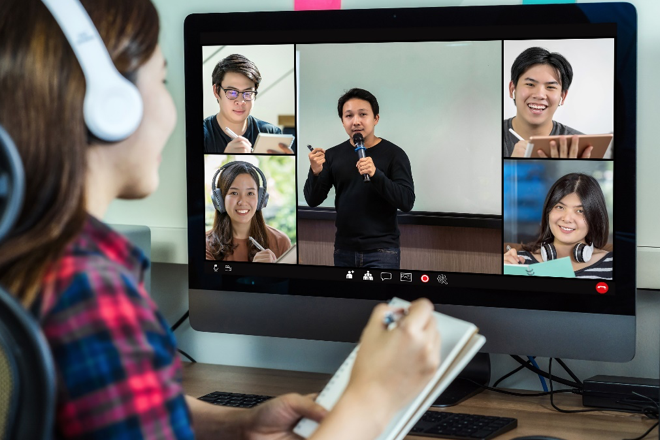
This is the third of 10 Lessons from a Post-Pandemic World. For the other nine, click here.
“We know how to do quality online and blended learning, but we can also learn from emergency online learning.”
“We still need to learn about the conditions in which synchronous learning works best, but we need to avoid simple conclusions…”
There was a lot of head shaking about emergency online learning, with many experts trying to “distance” quality online learning from emergency online learning.
The main criticism is using Zoom to deliver lectures is not the most effective way to teach online. These criticisms are based on more than 20 years’ experience in identifying what works well — and what doesn’t — in online learning. However, I’d like to make two important points.
First, many best practices were developed through asynchronous online learning, with the learning management system (LMS) as the key tool. Asynchronous tools such as the LMS enable students to learn at any time, anywhere.
The LMS was the original technology of choice for online learning because its main benefit was providing better access.
Asynchronous vs synchronous
Asynchronous online learning was the only way many people with jobs or families could study. Going to a campus regularly was just not possible, but these students could structure their learning around other commitments.
We know, too, that students generally learn better asynchronously, because they have not only more flexibility, but spend more time on task. It is on the basis of such asynchronous learning that best practices in online learning were developed.
Second, video streaming was not technically feasible until a few years ago, at least at a manageable cost. But along came Zoom and other streaming technologies, and so in Spring 2020, synchronous video was seized upon by many instructors because they could move to it instantly, with little adaptation of their existing teaching methods.
User-friendly system
Since it takes considerably less time to learn how to use a very user-friendly system such as Zoom than to learn about different teaching methods — or a learning management system — this was obviously going to be the approach of choice for most instructors without prior online teaching experience, when everything had to be moved online in less than two weeks.
This resulted in many online learning experts throwing their hands in the air and claiming this wasn’t “proper” online learning. As a result, much of summer 2020 was spent trying to persuade instructors to move away from streaming lectures for the Fall 2020 semester.
What prior experts in online learning, including myself, were slow to acknowledge is there are also some pedagogical benefits in synchronous online learning, especially for full-time students who now can no longer access the campus.
Not having to choose
In reality, it is not a choice between Zoom or Moodle, for instance, but deciding the advantages or affordances of each, and then using them appropriately.
Indeed, even before COVID-19, Zoom and similar technologies were increasingly used for online learning.
We still need to learn about the conditions in which synchronous learning works best, but we need to avoid simple conclusions that synchronous or asynchronous, face-to-face or online, are intrinsically better or worse.
We need to identify the conditions in which each delivery method works best, and the response to COVID-19 is providing the opportunity to identify these conditions.
The end of lecture streaming?
I expect that streaming live 60-minute lectures with little student interaction will remain a poor way to teach online.
We are finding more useful ways to use synchronous technologies, such as virtual small group discussions, using the Zoom break-out facility, with reporting back into the main class, although I am expecting other roles for online synchronous learning to be developed.
For Lesson 4, click here: COVID-19 showed the need for more flexible assessment methods.









 Dr. Tony Bates is the author of eleven books in the field of online learning and distance education. He has provided consulting services specializing in training in the planning and management of online learning and distance education, working with over 40 organizations in 25 countries. Tony is a Research Associate with Contact North | Contact Nord, Ontario’s Distance Education & Training Network.
Dr. Tony Bates is the author of eleven books in the field of online learning and distance education. He has provided consulting services specializing in training in the planning and management of online learning and distance education, working with over 40 organizations in 25 countries. Tony is a Research Associate with Contact North | Contact Nord, Ontario’s Distance Education & Training Network.


I totally agree about not to simplify that asynchronous is always better than the synchronous online learning. The experience during covid has made professors more creative is using tools like zoom and combining it with not only breakout rooms but also other engagement strategies such as online polling and quizes. We definitely need more research on this.